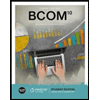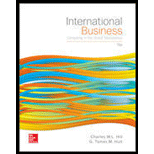
Case summary:
Country M was the poorest country in the world. Most of the population earned less than a dollar per day. Person M was their president and brought about many changes to develop the country. He mainly focused on agriculture and introduced many schemes for poor farmers. In return, there was a good yield in agriculture, the country economy increased to 7% in between 2005 and 2010.
Person M was then again re-elected as president. There was lot of difference this time in his ruling because this country was affected to a greater extent. He took control over economic policies and all the economic decision were taken on his own. This brought about many changes for the country and they lost support from other countries.
Person M refused to devalue Currency K and refused to meet Institution IF; this led the country to face financial crises. Later, in City B, they made an announcement that Country M would devalue Currency K by 40%, so Institution IF unblocked its loan program.
Characters in the case:
Country M,
Person M,
Institution IF.
To determine: The reason why Person M resisted Institution IF’s call to devalue currency K and the condition of Country M’s economy if he had lived and remained in power.
Want to see the full answer?
Check out a sample textbook solution
Chapter IC Solutions
International Business: Competing in the Global Marketplace
- Ansarrow_forwardPeterson Industries reported a net loss of $32,000 during the year. Comparing beginning and ending balances, you determine the following: (1) accounts receivable decreased by $12,000; and (2) accrued expenses payable decreased by $7,000. What was the amount of cash used in operating activities during the year? a. $27,000 b. $37,000 c. $17,000 d. $51,000arrow_forwardWhat is the mark up percentage in full cost to arrive at the target selling pricearrow_forward
- Please help me solve this general accounting problem with the correct financial process.arrow_forwardNeedhdjxjx ususs shsharrow_forwardBrightway Corporation began using the allowance method in 2020. On January 1, 2020, Brightway had a $5,000 balance in the accounts receivable account and a zero balance in the allowance for doubtful accounts. During 2020, Brightway provided $30,000 of services on account. The company estimated that 4% of ending accounts receivable would be uncollectible. By the end of 2020, customers had paid $26,000 on their accounts. What is the balance in Brightway Corporation's Allowance for Doubtful Accounts at December 31, 2020?arrow_forward
 BUSN 11 Introduction to Business Student EditionBusinessISBN:9781337407137Author:KellyPublisher:Cengage Learning
BUSN 11 Introduction to Business Student EditionBusinessISBN:9781337407137Author:KellyPublisher:Cengage Learning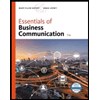 Essentials of Business Communication (MindTap Cou...BusinessISBN:9781337386494Author:Mary Ellen Guffey, Dana LoewyPublisher:Cengage Learning
Essentials of Business Communication (MindTap Cou...BusinessISBN:9781337386494Author:Mary Ellen Guffey, Dana LoewyPublisher:Cengage Learning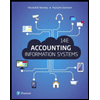 Accounting Information Systems (14th Edition)BusinessISBN:9780134474021Author:Marshall B. Romney, Paul J. SteinbartPublisher:PEARSON
Accounting Information Systems (14th Edition)BusinessISBN:9780134474021Author:Marshall B. Romney, Paul J. SteinbartPublisher:PEARSON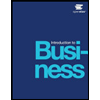
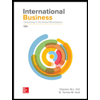 International Business: Competing in the Global M...BusinessISBN:9781259929441Author:Charles W. L. Hill Dr, G. Tomas M. HultPublisher:McGraw-Hill Education
International Business: Competing in the Global M...BusinessISBN:9781259929441Author:Charles W. L. Hill Dr, G. Tomas M. HultPublisher:McGraw-Hill Education